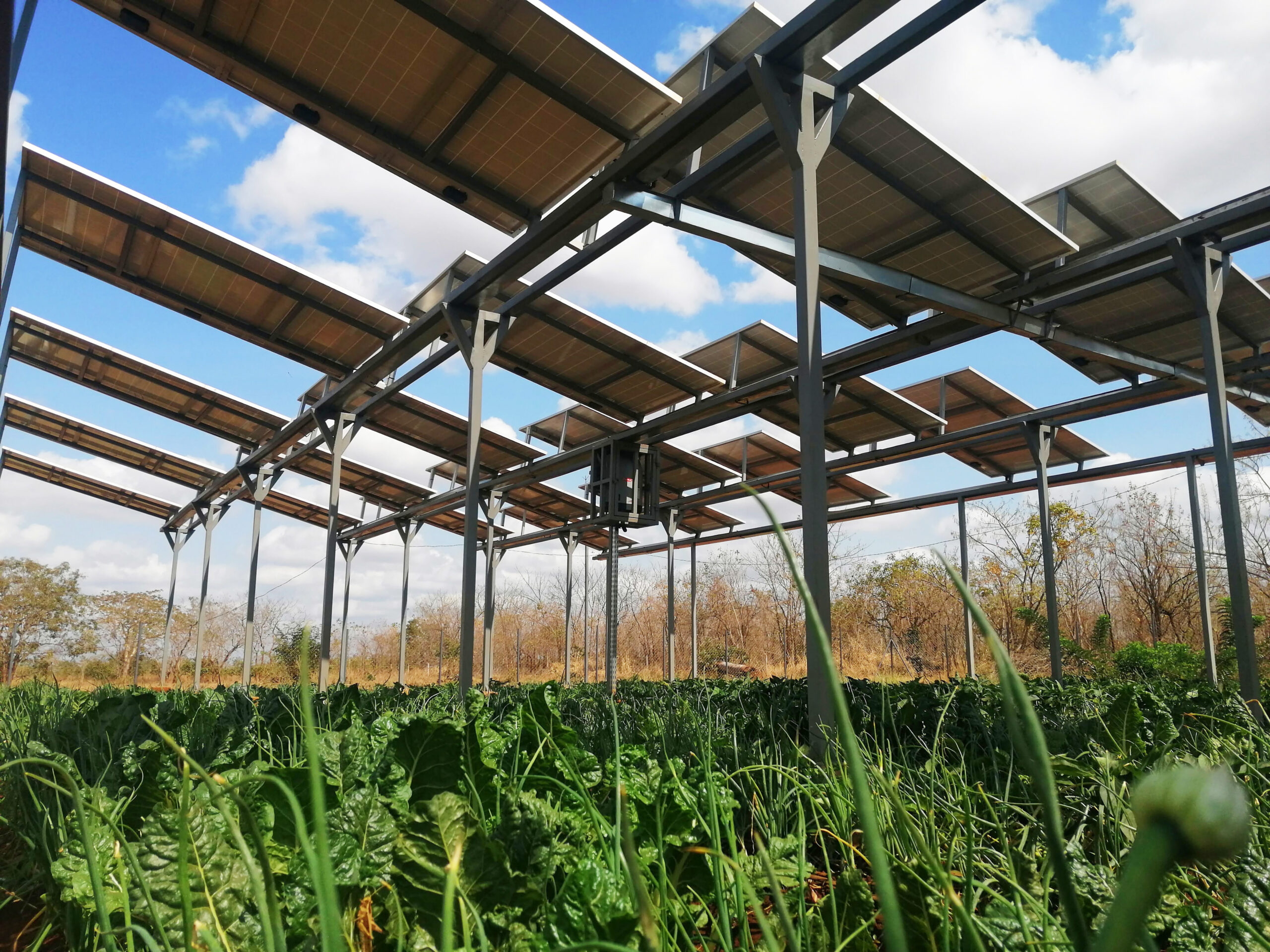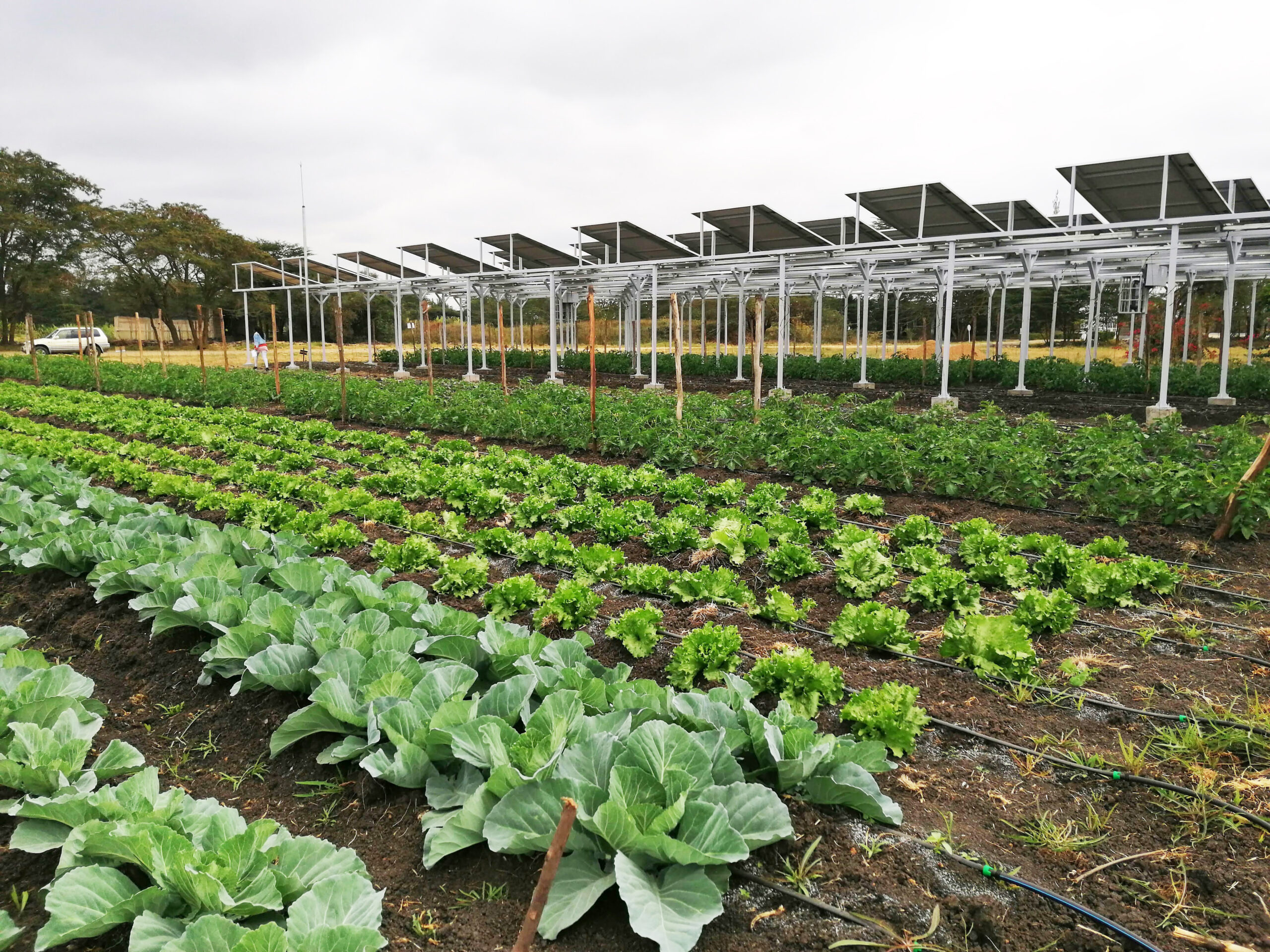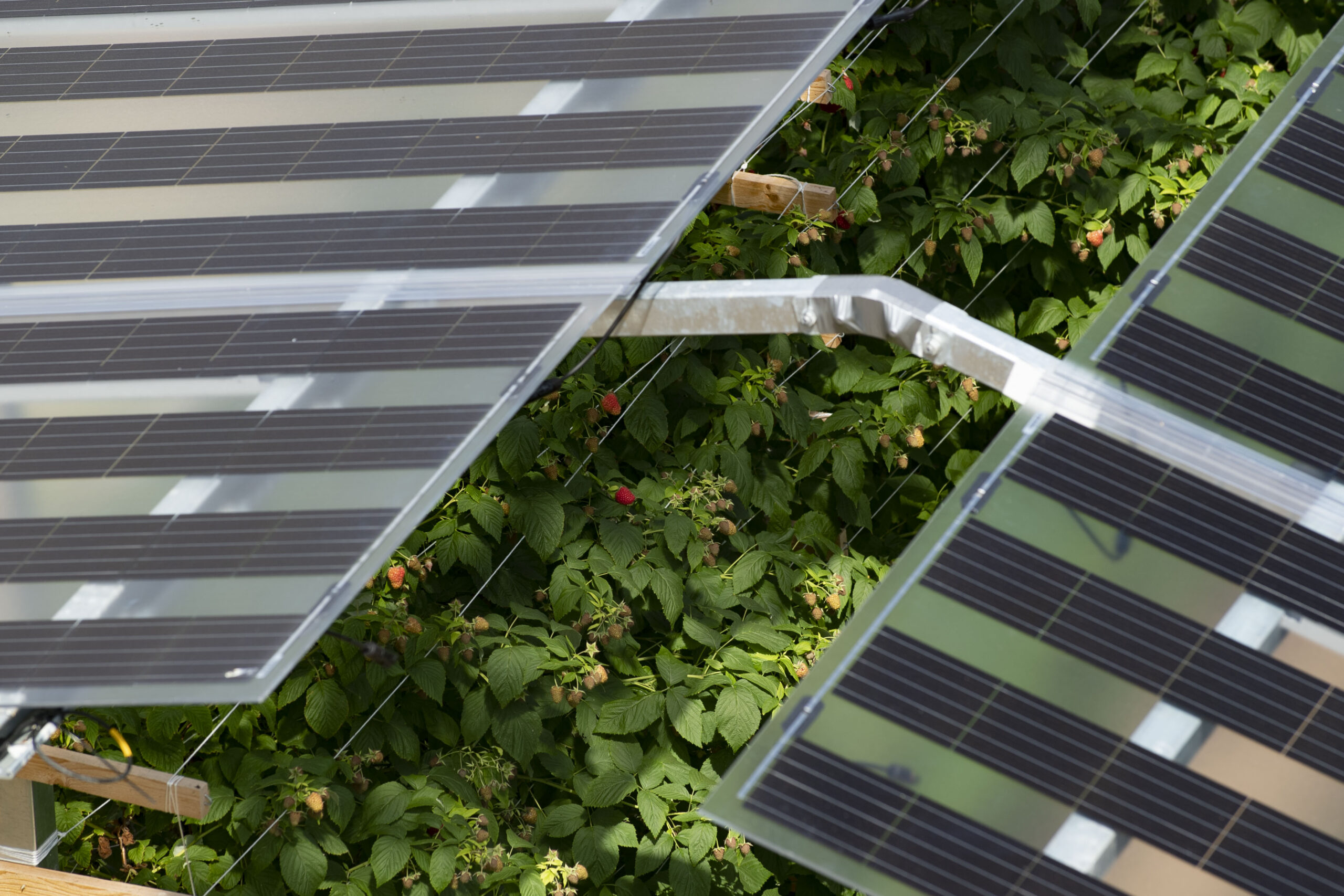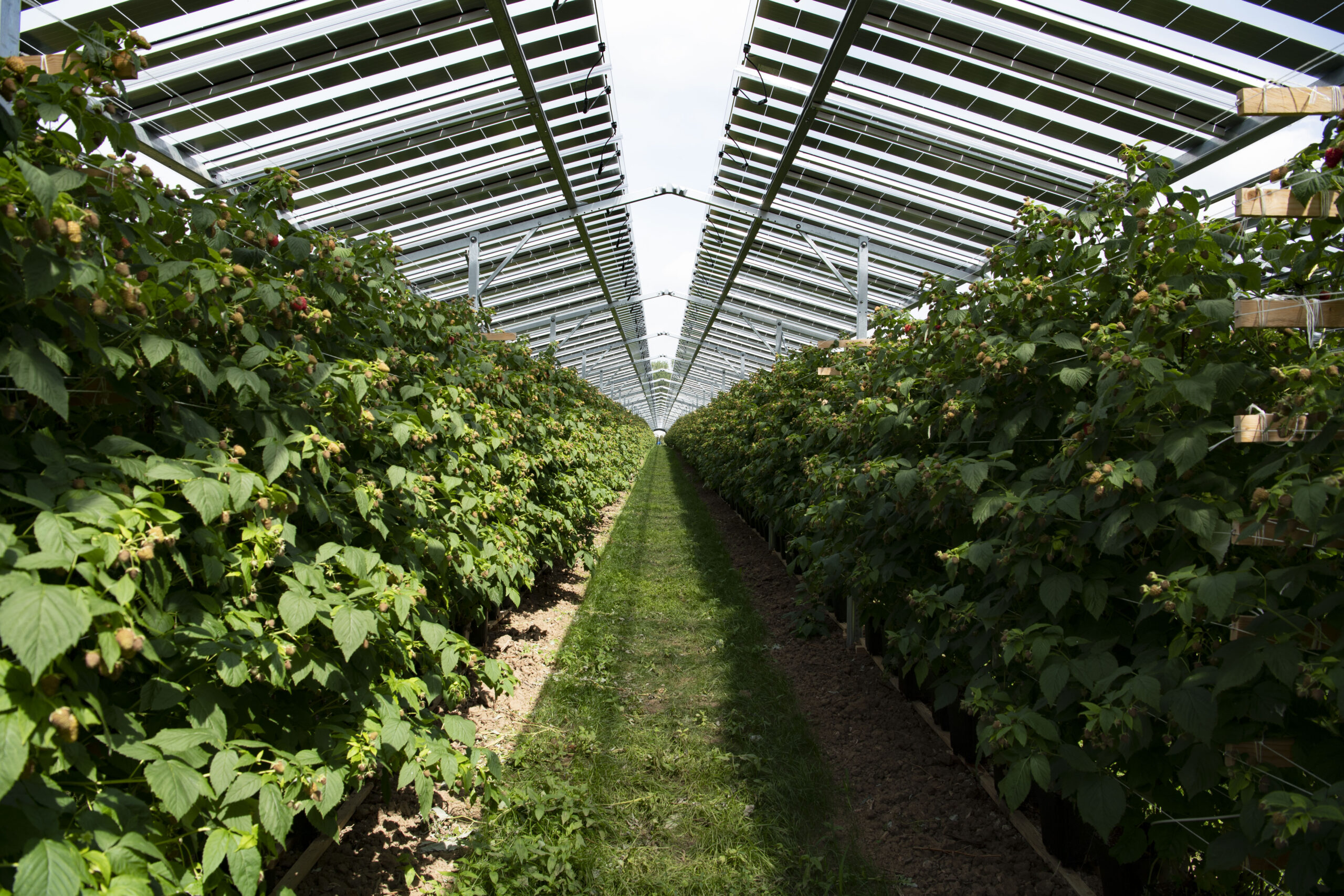Swiss Chard is harvested from agrivoltaics site at Latia Agribusiness Solutions in Isinya, Kenya (Photo credit: CIFOR-ICRAF/Christine Lamanna)
Three ways that clean energy innovation and climate change adaptation can work in lockstep
On the International Day of Clean Energy, we spotlight three ways of integrating renewable energy innovation and climate adaptation efforts to build the resilience of vulnerable communities to climate change
M
itigation and adaptation are typically seen as discrete strategies for addressing climate change. While mitigation efforts aim to lower or remove greenhouse gas emissions, adaptation actions are targeted at helping communities, societies, and systems withstand climate impacts.
But mitigation and adaptation can also work in lockstep to address the intensifying impacts of climate change. Clean energy technologies, in particular, can be harnessed for climate adaptation and resilience —and vice versa. On the International Day of Clean Energy, we highlight three synergies between clean energy innovations and climate adaptation solutions that we can capitalize on to help communities on the frontlines of climate change build their resilience.
1. Use decentralized clean energy solutions to support the adaptation measures of vulnerable communities
Distributed renewable energy solutions, or technologies that deliver electricity outside the central grid, can be a reliable source of energy for communities in remote areas. Off-grid energy systems are more resilient after grid outages following climate shocks such as severe storms and can help ensure that services and communications continue to reach communities.
Moreover, decentralized clean energy solutions can power innovative and locally led adaptation solutions. In Rangamati Hill, Bangladesh, for example, the community improved their resilience to the drought gripping their region by installing a solar-powered tube well to pump, store, and distribute water to their homes. In addition to providing the community with clean water, this water facility also allows them to irrigate the fruit orchards that they rely on for food and income.
In Guanacaste, Costa Rica where increasing aridity poses a threat to farmers, a finca installed a windmill to carry water to a reservoir, which is then distributed through different sections of the farm. This irrigation system, powered by clean energy, ensures that their crops receive sufficient water even during dry spells.
2. Explore multi functional clean energy solutions with climate adaptation benefits
In addition to providing renewable energy, solar panels can also be installed strategically to deliver climate adaptation benefits.
Agrivoltaics combine farming and solar photovoltaic electricity production so that land can be used to simultaneously grow food and generate power for agribusinesses and communities. Solar panels are installed several meters above the ground with gaps between the arrays so that crops can be grown underneath.

Intercropped vegetables grow in partial shade of solar panels at an agrivoltaics site at Sustainable Agriculture Tanzania in Morogoro, Tanzania (Photo credit: CIFOR-ICRAF/Christine Lamanna)

Crops are grown in an open field to compare how the shade of solar panels changes yield in an agrivoltaics system at Latia Agribusiness Solutions in Isinya, Kenya (Photo credit: CIFOR-ICRAF/Christine Lamanna)
Agrivoltaics are being tested in Kenya, Tanzania and Uganda, where the shade offered by solar panels protects crops from intense heat and reduces water loss from the plants and soil, resulting in bigger and healthier cabbages, aubergines, lettuce, and maize.
In the Netherlands, agrivoltaic systems are being tested on fruit crops that are already typically cultivated with overhead protection. Solar panels replace the plastic arches usually used to protect raspberries from rain, hail, and excessive heat, taking advantage of “solar sharing” without vastly impacting the landscape.

Above and below: Agrivoltaics site in the Dutch Sunbiose project: Raspberries under semi-transparent solar panels (Groenleven BV) at Albers, Babberich, the Netherlands (Photo credit: Wageningen University & Research, Hellen Elissen)

3. Climate-proof clean energy investments against current and projected climate risks
As clean energy investments scale up across the globe, it is critical to ensure that projected climate risks are considered and climate adaptation measures integrated in their design. This helps ensure that the clean energy systems developed are able to meet the challenges brought by a rapidly changing climate.
Through the Africa Adaptation Acceleration Program (AAAP), GCA is supporting the African Development Bank (AfDB) project Scaling up Renewable Energy Program (SREP) in Ghana. The program will develop 35 mini-grids in the Volta Lake region and deploy 12,000 units of roof-mounted net-metered solar photovoltaic (PV) systems for public institutions, small and medium-sized enterprises, and households, and 11,000 stand-alone solar home systems for lakeside and island communities in Ghana. GCA identified and appraised adaptation measures based on its findings that climate hazards can reduce the performance of PV panels, damage the assets leading to a very long power outage, and in extreme cases, cause a total system failure to the mini-grids and solar PV systems.
In the Sahel region, which is set to become the world’s largest solar production zone through the AfDB-financed Desert to Power initiative, GCA is integrating climate adaptation and resilience into projects under the AAAP. GCA assessed climate risks and identified tailored adaptation solutions for different asset classes such as solar PV, concentrated solar power, and transmission and distribution networks in 10 countries across the Sahel region. GCA’s technical support will strengthen the initiative by safeguarding against climate risks to ensure the production and delivery of up to 10,000 megawatts of solar energy to 250 million people.

Celine Novenario is the Senior Communications Manager at the Global Center on Adaptation.

Tanim Istiaque is a Senior Program Officer, Infrastructure and Nature-Based Solutions at the Global Center on Adaptation.